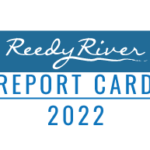BY APRIL MORRIS – UPDATED OCTOBER 23, 2015
Source: Greenville Journal
One of the Upstate’s treasured rivers, the Reedy River, once was the power for numerous textile mills – and their dumping ground. The rushing water was said to have turned the shade of whatever dyes were coloring the mills’ cloth that day. After years of effort and cleanup, the river is now an attraction and an asset. There is still work to be done, however, say water quality advocates. To even further improve the Reedy’s health, partners ranging from the volunteer and conservation levels to the federal government have collaborated to form the Reedy River Water Quality Group (RRWQG).
 The group says its aim is to “develop water quality improvement plans using water quality monitoring, river system modeling, public education on pollution prevention, successful practice review and economic impact analysis.”
The group says its aim is to “develop water quality improvement plans using water quality monitoring, river system modeling, public education on pollution prevention, successful practice review and economic impact analysis.”
The Reedy is “much cleaner than it used to be, but it still has some issues,” said Kirsten Robertson, district manager of the Greenville County Soil and Water Conservation District. The RRWQG held a kickoff in March with representatives of 29 conservation, citizen and government groups attending, she said.
Nutrient overload is one river issue that still needs addressing, Robertson said. High levels of nutrients can create algae blooms, reduce dissolved oxygen in the water and in turn kill fish, she said.
The source is believed to be failing and malfunctioning septic tanks, she said, which can leak onto the surface of the ground and wash into waterways. To reduce this type of pollution, the RRWQG recently received a grant from the U.S. Environmental Protection Agency through the SC Department of Health and Environmental Control. The two-year grant will fund an estimated 60 repairs or replacements of failed septic tanks in the Huff Creek Watershed, which feeds into the Reedy River, Robertson said.
The Huff Creek Watershed septic project is the group’s initial focus, along with general pollution prevention education “for all who live in the watershed to know that every drop of rain goes into the river,” said Robertson.
 For future efforts, the group is “gathering data and seeing what’s possible and economically feasible,” she said. Reedy River Water Quality Group is currently conducting continuous monitoring that will soon be available for viewing online, she added.
For future efforts, the group is “gathering data and seeing what’s possible and economically feasible,” she said. Reedy River Water Quality Group is currently conducting continuous monitoring that will soon be available for viewing online, she added.
How you can help
Upstate residents can help keep the Reedy River clear by cleaning up pet waste, determining exactly the amount of fertilizer needed for yards to avoid runoff, and keeping yard waste out of the river and storm drains, Robertson said. In addition, volunteers can help with water quality monitoring, cleanup events and education outreach. Upstate Forever’s Adopt-A-Stream program trains citizen scientists to collect and analyze samples for bacteria along with recording temperature, dissolved oxygen, pH and other levels. Residents can also join the Friends of the Reedy River or Lake Conestee Foundation to participate in cleanups and other events. Coordinating such a diverse group of agencies and organizations took some work, but is worth it, Robertson said. “It’s very exciting. It gives me chill bumps to have all these organizations working together.”

Get involved
Check out these resources for ways you can contribute to clean water in the Upstate:
Reedy River Water Quality Group
Volunteers can join the stakeholder advisory group.
Greenville County Soil and Water Conservation District
– See more at: http://greenvillejournal.com/local/4947-restoring-the-reedy.html#sthash.YDyCtqQ1.dpuf





